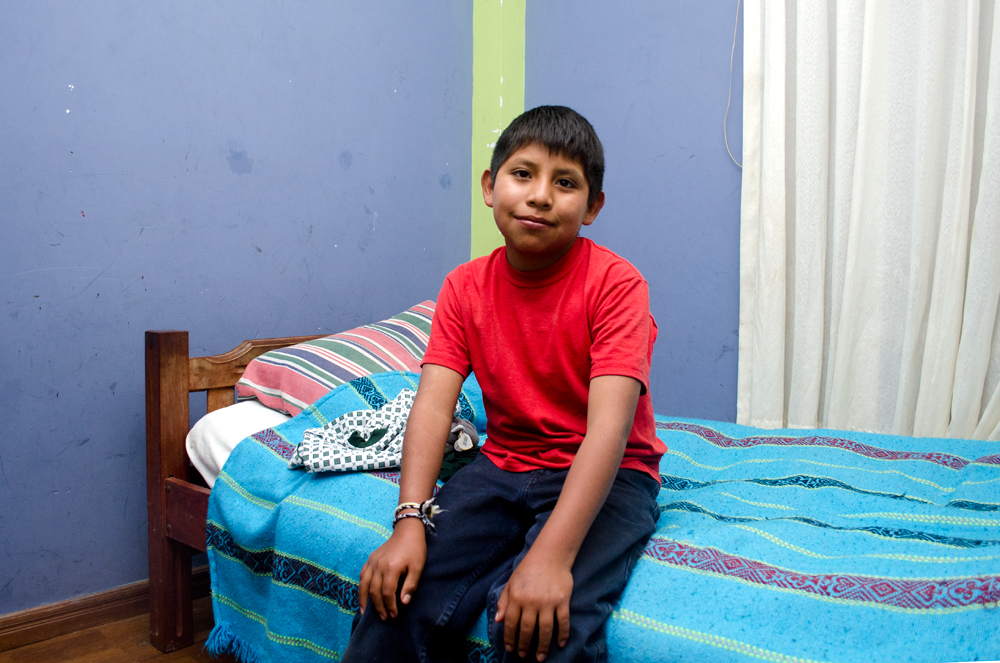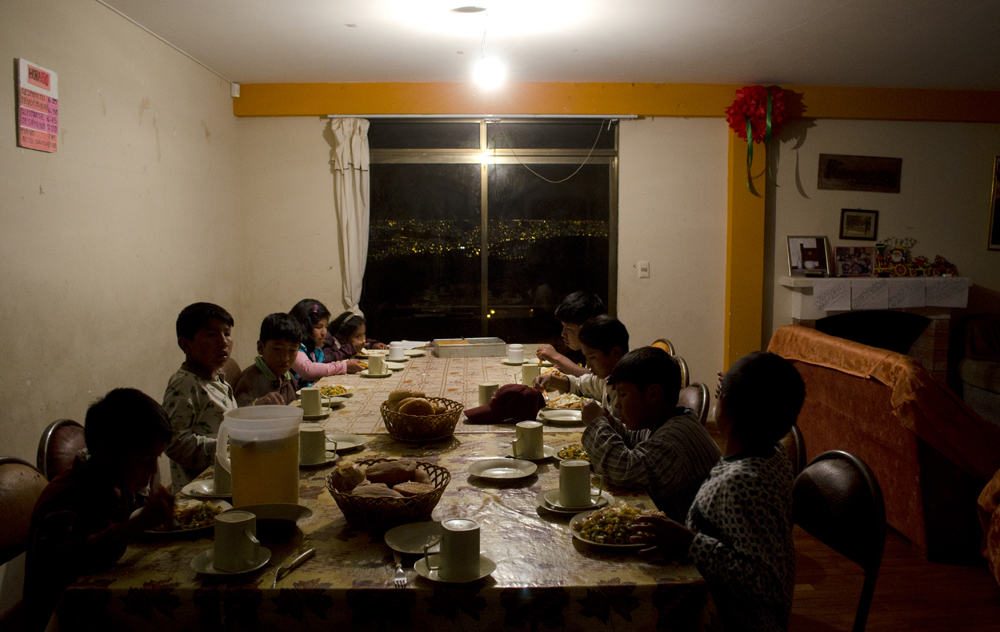Kaya’s Residential Programme
As well as their day centre Kaya also run a residential programme, where a number of the most vulnerable children are offered a place to call home. A semi detached house sat on the very outskirts of the city offers a tranquil and secure place for the children to begin reliving and rebuilding a true childhood. The first of the two homes house seven young boys whilst the second houses Kaya’s young teenage boys. Each casa is supervised by a specially trained Tio or Tia, a live in ‘Aunt’ or ‘Uncle’ who care for the children day to day. At the moment this housing is only available to boys, however, the charity are currently fundraising to create a similar housing system for the girls of Kaya.
“At Kaya, a child who enters our program with only the clothes on his back immediately becomes part of a family, and is treated the way each one of us would want our own child to be treated from day one.” – Kaya on their Residential Programme.
Kaya’s whole programme is divided into three key phases; transition off the streets, long term residency (seen here) and transition to independence or family reunification and each child is individually guided through these phases. Kaya’s ultimate aim is to reintegrate children with their families wherever possible, whilst ensuring that they will be cared for in a safe and secure environment.
Within the residential programme, Kaya ensures that each child has their own personal space in a bedroom shared with either one or two others. From their very first day in the house the children also have personal possessions such as clothes, shoes, blankets and toys. The children are immediately provided with these basics, things we often take for granted, and unlike some organisations are not made to earn these fundamental items.



During the first of the three phases, transition off the streets, the children receive intense services in a supportive and structured environment. The children are encouraged to addressed personal challenges such as drug abuse, anger management, emotion regulation, depression and anxiety, self-esteem, conflict resolution and guided to develop coping strategies. Whilst Kaya supports the children in these areas they also seek to rehouse the children with family members or prepare the children to enter a permanent Kaya home. The children you see in these images are all at different stages of life in a Kaya home.


“Living as families serves two main purposes. First, it fulfills the basic human need for a place to belong and offers the children a second chance at building familial relationships. And second, it serves as a model of a functional family, providing our children with a first-hand understanding of what it takes to build a healthy home” – Kaya on their Residential Programme

As with many family homes, the children are expected to complete daily chores such as setting the table, helping to wash clothes and cleaning the house. These tasks give the boys a degree of responsibility and encourages them to respect their home environment. As the boys get older, their responsibilities grow. Though a few simple household chores may seem insignificant its implementation highlights one of Kaya’s principle philosophies; to nurture independence and self sufficiency, characteristics which will prove invaluable as the boy’s make the transition from childhood to adulthood. This ethos is even clearer in the charities third and final house, where Kaya’s 16-18 year olds live. I will be blogging about ‘Casa De Juvinil’ later and taking a closer look at the ways in which Kaya prepare their children for a realistically independent and sustainable future.

One defining characteristic of the residential programme is that it serves as a home, not an institution or a ward and the children receive a healthy balance of both structure and freedom. With plenty of outdoor space to play, dedicated homework areas, communal living room and dining room the children work and live together as a family.


After photographing in both the young boy’s and teenager’s houses I’m invited to stay for dinner and it’s just like sitting around a table full of friends and family. After all their greens are eaten the youngest boys bound into the living room. They wrestle each other into the sofas and assure us they are allowed to play like this as long as no one ends up crying! I recall my older brother of 6 years teaching me to wrestle at home and my parents proclaiming ‘It’ll end in tears!’ Each casa is your typical family home, full of laughter, happiness and the occasional tantrum, but above all else, full of love.